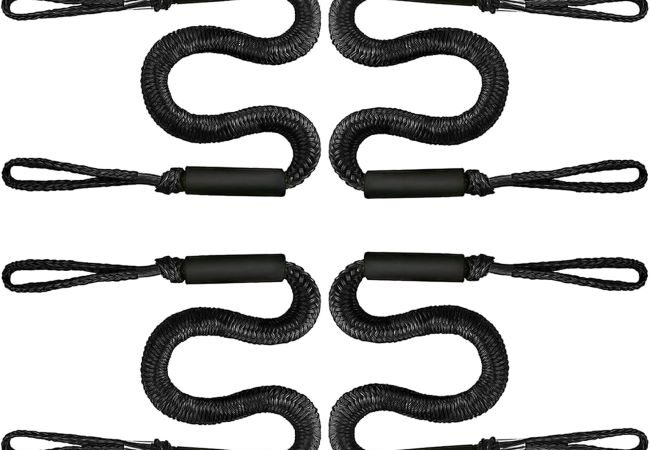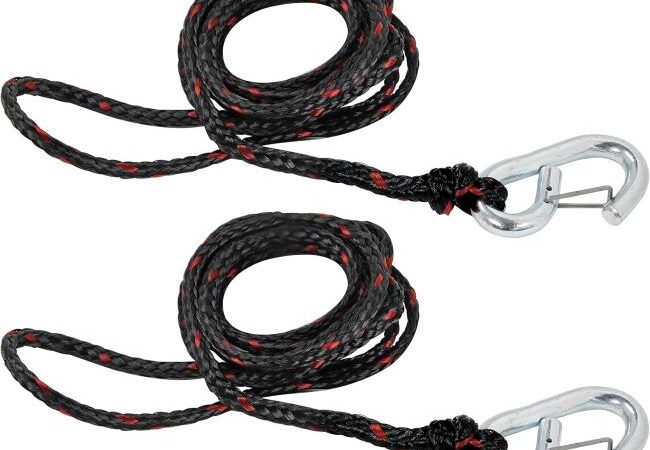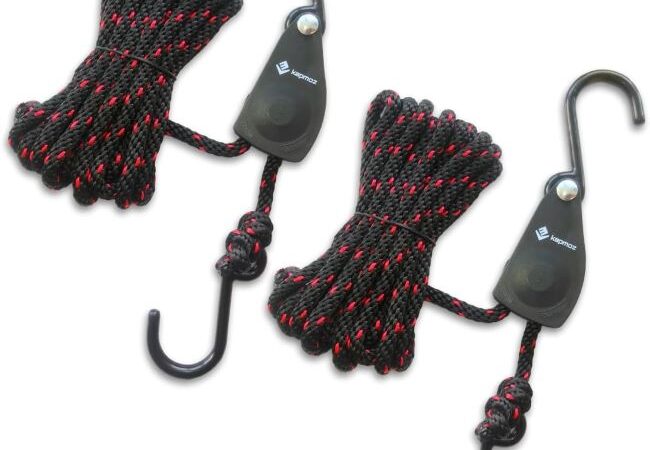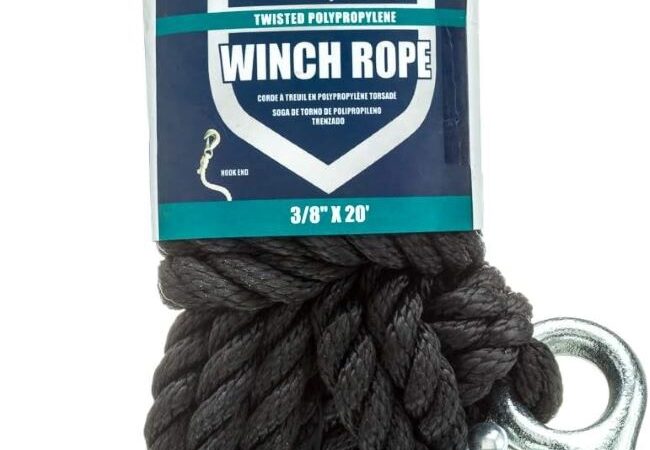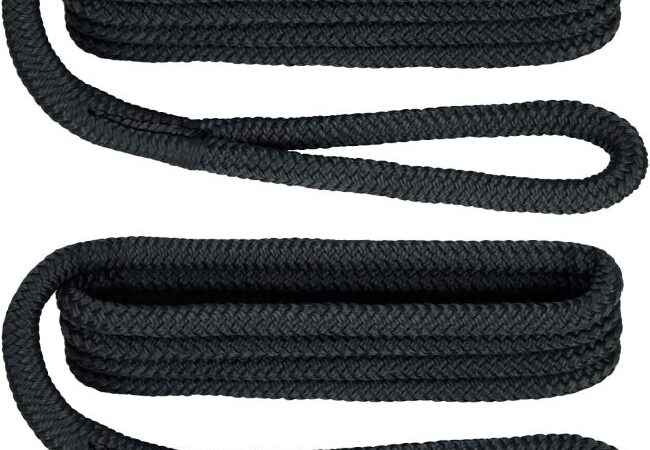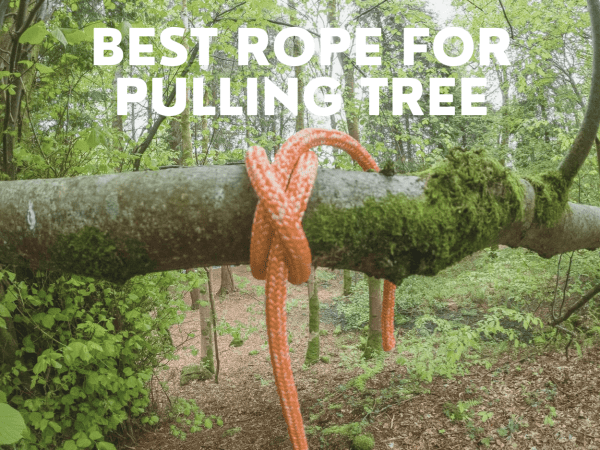
Tree Pulling Rope: The Ultimate Arborist’s Guide
Tree pulling ropes are strong, durable cords designed for uprooting or handling trees. They must withstand high tension and abrasive conditions.
Contents at a Glance
ToggleTree pulling ropes are essential tools for landscapers, arborists, and anyone involved in tree removal or relocation. These ropes are crafted to resist wear and tear while providing the necessary grip and leverage to safely pull down or transport trees.
They come in various thicknesses and materials, each tailored to specific tree sizes and weights, ensuring the job can be done efficiently and with minimal risk. The right rope can be the difference between a successful tree removal and a potentially dangerous situation, making it crucial for professionals to choose high-quality, reliable tree pulling ropes for their work.
The Significance Of Tree Pulling Ropes In Arboriculture
Tree pulling ropes are essential in arboriculture. These ropes ensure that arborists can remove trees safely and efficiently. They are designed to handle the heavy loads and stresses associated with tree work.
Key Roles In Tree Care And Removal
Ropes used in tree care serve several critical functions. They are not just tools; they’re lifelines for arborists. Below are their key roles:
- Directional Felling: They guide the fall of a tree to prevent property damage.
- Support: Ropes provide support to limbs and branches during removal.
- Control: They offer control over tree sections being lowered to the ground.
Safety And Efficiency In Arborist Work
Tree pulling ropes contribute to the safety and efficiency of arborists in several ways:
| Safety Feature | Efficiency Benefit |
|---|---|
| Strength: They can withstand high tension. | Speed: Arborists work faster with reliable equipment. |
| Durability: Ropes last through tough conditions. | Cost-effective: Durable ropes don’t need frequent replacement. |
| Flexibility: They adapt to various tree sizes and weights. | Versatility: One rope can be used for multiple tasks. |
Types Of Tree Pulling Ropes
Understanding the right type of tree pulling rope is crucial for safety and efficiency. Different tasks require different ropes. Let’s explore the types and their uses.
Static Vs. Dynamic Ropes
Static ropes do not stretch much under tension. This feature makes them ideal for tree pulling where consistent tension is needed. They offer control and stability.
Dynamic ropes, on the other hand, stretch to absorb energy. These are not typically used for tree pulling but are important to know for comparison.
Material Differences: Polyester, Nylon, And More
- Polyester ropes are strong, durable, and resist stretching. They are perfect for heavy loads and don’t absorb much water.
- Nylon ropes are also strong but offer more stretch than polyester. This can be useful in some tree pulling scenarios.
- Other materials like polypropylene and manila exist but are less common for tree pulling due to their specific characteristics.
Selecting the right material is as important as choosing the type of rope. Consider both the task at hand and the environmental conditions.
Choosing The Right Rope For Tree Pulling
For those ready to tackle tree pulling tasks, selecting the ideal rope is essential. A strong, durable rope ensures safety and efficiency during the operation. This guide helps you choose the perfect rope for tree pulling, focusing on key characteristics.
Strength And Durability Factors
Tree pulling demands ropes with high tensile strength. These ropes handle the immense forces during the pull. Look for ropes made from materials like polyester or nylon, as they offer excellent strength. Another factor is the rope’s resistance to abrasion and UV damage. A durable rope withstands rough surfaces and outdoor conditions.
Length And Diameter Considerations
The right length and diameter of the rope are crucial for tree pulling success. Longer ropes provide more distance, which can be safer during pulling. The diameter affects grip and load-bearing capacity. Here’s a quick reference:
| Diameter (inches) | Load Capacity (lbs) |
|---|---|
| 1/4″ | 750 |
| 1/2″ | 3,000 |
| 3/4″ | 4,500 |
Choose a rope with a diameter that provides a secure grip and matches the tree’s size. For larger trees, opt for thicker ropes. This ensures the rope can handle the weight without snapping.
Remember, the right rope for tree pulling will make the job safer and more efficient. Consider these factors to find your ideal match.

Credit: www.amazon.com
Knots And Hitches: Securing Trees Effectively
Knots and Hitches: Securing Trees Effectively is crucial for arborists. Proper techniques ensure the safety and health of trees during transplanting or removal. Learn essential knots and how to apply them for the strongest hold.
Essential Knots Every Arborist Should Know
Knowing the right knots can make a big difference. Here are a few key ones:
- Bowline Knot: Creates a secure loop that tightens under load but is easy to untie.
- Running Bowline: Ideal for hoisting branches securely.
- Double Fisherman’s Knot: Great for joining two ropes without slipping.
- Clove Hitch: Useful for attaching ropes to tree trunks.
Tying Techniques For Maximum Grip
Effective tying techniques are essential for tree stability. Follow these steps:
- Choose the right rope. Opt for one that is strong and durable.
- Clean the rope before use. Remove dirt to prevent slipping.
- Use gloves to protect your hands and improve grip.
- Practice the knots. Regular practice leads to better and quicker ties.
Remember: A secure knot can prevent accidents and ensure tree health.
Mechanical Advantage Systems In Tree Pulling
Mechanical Advantage Systems in Tree Pulling are crucial for safely and effectively removing large trees. These systems multiply the force applied, making the task easier and more efficient. Let’s explore how pulleys and hoists, as well as leverage techniques, can transform a challenging job into a manageable one.
Pulleys And Hoists
Pulleys and hoists are vital tools in tree pulling. They work by changing the direction of force, allowing for heavy lifting with less effort. Here’s how they help:
- Reduce Load Weight: By distributing weight across multiple points.
- Controlled Movement: For precise positioning of the tree.
- Safety: Minimize risks by controlling the fall.
Choose the Right Equipment: It’s essential to select pulleys and hoists that can handle the tree’s weight.
Creating Leverage For Large Trees
Leverage is key when dealing with large trees. It turns a tough pull into an easier task. Here’s how to create leverage:
- Position Anchors: Set them away from the tree.
- Use a Long Rope: Longer ropes increase the leverage.
- Apply Force Efficiently: Pull in the right direction.
Understand the Physics: Leverage relies on physics. A longer distance from the pivot increases power.

Credit: m.youtube.com
Maintenance And Care Of Tree Pulling Ropes
Tree pulling ropes endure tough conditions. Proper maintenance extends their life. Learn best practices for care, cleaning, and inspection. Keep your ropes reliable and safe.
Cleaning And Storage Best Practices
- Remove debris and dirt after each use.
- Use mild soap and lukewarm water for washing.
- Avoid harsh chemicals that damage fibers.
- Rinse ropes thoroughly to remove soap.
- Hang ropes in the shade to air dry.
- Store dry ropes in a cool, dark place.
- Avoid direct sunlight and moisture during storage.
Inspecting For Wear And Damage
- Check for frays, cuts, or abrasions regularly.
- Examine the entire length for weak spots.
- Look for unusual stretching or deformities.
- Pay attention to areas near knots or hardware.
- Retire ropes showing signs of serious damage.
- Record inspections to track rope condition over time.
Advanced Tree Pulling Techniques
Advanced tree pulling techniques help ensure safe and effective tree removal. These methods use specialized ropes and strategies to control the direction and fall of the tree.
Directional Tree Felling
Directional tree felling involves planning the exact path of a tree’s fall. This precision prevents damage to surrounding property and ensures safety. Here’s how it works:
- Assess the tree for health, lean, and surrounding area.
- Choose the right rope based on tree size and weight.
- Attach ropes at strategic points.
- Use cutting techniques to guide the fall.
This method combines skill with high-quality equipment to manage tree removal efficiently.
Managing Complex Tree Removals
Complex tree removals need careful planning and execution. These situations often involve large, unstable, or awkwardly positioned trees. Effective management includes:
- Evaluating the area for obstacles and risks.
- Using advanced rigging techniques to secure the tree.
- Applying controlled cutting methods.
Professionals use these steps to safely remove challenging trees.
In both techniques, the use of the right tree pulling rope is critical. It must be strong, durable, and suitable for the tree and the conditions.

Credit: chainsawacademy.husqvarna.com
Safety Measures For Arborists Using Pulling Ropes
Working with trees involves risks, especially when using tools like pulling ropes. Arborists must follow safety measures to protect themselves and others. This section covers essential precautions and preparedness steps to ensure safety during tree pulling operations.
Personal Protective Equipment (ppe)
Arborists need proper gear for protection. Before starting any job, check your PPE:
- Gloves guard hands against rope burn and cuts.
- Helmet protects your head from falling branches.
- Eye protection keeps debris out of your eyes.
- Non-slip boots prevent falls from slippery surfaces.
- Ear protection reduces noise from machinery.
Always inspect PPE for damage or wear. Replace items that can’t keep you safe.
Emergency Procedures And Rescue Plans
Have a plan in case of accidents. Your team should know these steps:
- Know the location of first-aid kits and how to use them.
- Learn CPR and basic first aid.
- Establish clear communication signals for emergencies.
- Practice rescue drills regularly.
- Keep emergency contact numbers handy.
Always work with a buddy. They can help you quickly if something goes wrong.
Case Studies: Successful Tree Pulling Operations
Case studies reveal the effectiveness of tree pulling rope techniques in various scenarios. These stories showcase the skill and precision needed to navigate the challenges of urban environments and conservation efforts.
Urban Tree Removal Challenges
Cities often face complex tree removal tasks. Buildings, power lines, and busy streets complicate these operations. Professionals use tree pulling ropes to ensure safety and efficiency.
- Minimized damage: Ropes guide trees to fall in controlled areas.
- Improved safety: Risks to people and property reduce significantly.
One case involved a large oak in a tight city block. The team employed a network of ropes to remove the tree without incident.
Conservation Efforts And Tree Relocation
Tree relocation aids conservation. Ropes play a critical role in moving trees safely. This preserves the tree’s health and the environment.
| Tree Species | Location | Result |
|---|---|---|
| Bur Oak | Parkland | Successfully Relocated |
| Red Maple | Residential Area | Thriving Post-Move |
In a notable instance, a rare hickory found a new home. The tree now flourishes in a reserve, thanks to the tree pulling rope method.
Frequently Asked Questions
What Is The Best Rope For Tree Pulling?
The best rope for tree pulling is a strong, durable polyester or nylon rope with a high tensile strength. Opt for ropes specifically designed for arborist use to ensure safety and efficiency.
What Is Tree Rope Called?
A tree rope is commonly called a “climbing rope” or “rigging rope” in arboricultural practices.
What Rope Is Used To Pull Down Tree Limbs?
Arborists typically use strong, durable ropes like polyester or polypropylene for pulling down tree limbs. These materials provide the needed strength and flexibility.
What Is The Best Rope For Tying Up Trees?
The best rope for tying up trees is a soft, flexible, and weather-resistant arborist rope, ensuring minimal damage to the bark.
Conclusion
Selecting the right tree pulling rope is crucial for efficient and safe tree removal. Ensure the rope you choose is strong, durable, and suited to your specific needs. Remember, the right tools make all the difference in outdoor tasks. Equip yourself properly to tackle any tree pulling job with confidence.

